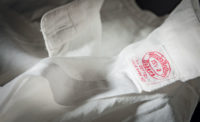Attention to Retail with My Private Brand's Creator
BRANDPACKAGING sits down with branding cohort Christopher Durham to discuss the lay of the retail brand land.










BRANDPACKAGING (BP): Chris, give us a little history: How did you get into private labels, and where have they taken you?
Christopher Durham (CD): In early 2004, I became the brand manager/creative services manager with Delhaize Group-owned grocer, Food Lion. I worked on everything from TV commercials to in-store signage to private brand. One project focused on the consolidation and optimization of the private brand portfolio from 60-plus labels to 12 brands, something that would serve me well when I moved to Lowe’s Home Improvement. We relaunched a streamlined portfolio with a new Food Lion brand, Home 360, and repositioned On the Go Bistro, the home meal solutions brand. After close to five years, I left Food Lion and moved to Lowe’s, where I worked as a brand manager focused on private brand strategy and, over five years, created, managed or repositioned many of its private brands including Blue Hawk, Style Selections, Harbor Breeze, Utilitech and allen + roth.
In 2012, I left Lowe’s to devote myself full time to My Private Brand and founded the retail brand-consulting firm, Folio28 LLC. I also launched Prêt a Marque, a spin-off site dedicated to the growth and development of exclusive, licensed and private brands in fashion and beauty.
BP: Tell us more about the My Private Brand website. What are you accomplishing with it?
CD: I launched My Private Brand in 2009 as a side project. It allowed me to get my feet wet in social media and blogging as well as talk about a subject that I love. There are a lot of trade magazines, consultants and brokers talking about traditional private label buying, product development and bad package design. I saw an opportunity to build a site focused on retailer-owned brands that’s designed to foster innovation, encourage debate and write the next chapter of private brand management. Five years and 3,000-plus posts later, the site continues to grow and push retailers to build and manage great brands.
BP: You have a book in the works. What is the angle behind “Fifty2”?
CD: “Fifty2: The My Private Brand Project” will be released in early 2014. The idea for the book came after a conversation with a retailer at a conference. He believed private label in America was all the same: simply a value play wrapped in bad design. I found the statement disturbing and realized it honestly wasn’t true. The book is a celebration of the 52 best retailer-owned brands in the U.S. across all channels. They bring their positioning and business objectives to life through great design, purpose, lifestyle and innovation. Each week, I present one of the brands on My Private Brand along with insight, analysis and original photography. The brands run the gamut from Craftsman at Sears, to Avant at Staples, to World Table at Walmart.
Working with New York City-based brand consultancy Wallace Church on design and photographer Teri Campbell of Teri Studios, we have created a beautiful book presenting the brands, their packaging and products in a unique and compelling way that rethinks not only traditional packaging photography but also traditional private label. My hope is this book will redefine not only the perception of private brand in America but also its potential.
BP: Okay, you’ve proved you know your stuff. Give us a summary on where private brands have come from over the years and where you see them headed.
CD: Private brand in packaged goods and grocery spans the last fifty years, moving from black and white generic products, to the emergence of better designed, if still ugly, private label knock-offs mimicking national brands in the 80s and early 90s, to today’s modern era of retailer-owned brands. However, the story is much larger than grocery. Sears sold its first Kenmore appliance in 1927, Radio Shack revolutionized the early home computer market in the 70s with the TRS-80, and today Amazon virtually controls the e-reader market with the Kindle. Customers seldom know or care who owns brands. Retailers must own brands that customers know and love, brands that create differentiation and give customers a reason to choose them over the store across the street or the website just a click away. National brands, by their very nature, are not designed to give any retailer differentiation. The only difference among Tide, Coke or Frosted Flakes from one retailer to the next is price. That is not differentiation. That’s a race to the bottom.
BP: In your opinion, how should private brands be managed, handled and marketed? The same as national brands?
CD: Private brands are one of the most valuable assets a retailer can own and need to be managed as such. They are uniquely different from national brands. The vast majority of national brands are focused on specific categories or small sets of categories. Retailers have the potential to create and manage branded solutions that solve problems and fill needs regardless of manufacturing capabilities. By unleashing their potential, they can create, merchandise and sell private brands that are customer-focused solutions. That requires an investment in brand and product development, merchandising, staffing and marketing of their brand assets.
BP: How can private labels grow from the perceived “budget” option to brands consumers love and look for on shelf?
CD: Private brands have already grown well beyond the clichéd “budget/value” positioning, however, the story has not changed. The average American retailer manages a robust portfolio of 12 to 40 brands, each targeting different customers, filling different needs and solving different business challenges. Yet researchers, traditional media and even grocers lump them into one big value bucket. Does anyone really believe that Simple Truth from Kroger, Great Value from Walmart and Threshold from Target should be lumped into the same imprecise private label bucket?
Retailers must believe enough in their brands and the business roles they play to understand that they may play other roles than the overused “compare and save.” They must reframe the conversation, confidently market and advertise their brands, and not allow traditional media or generic research to pigeonhole the story or their brands.
BP: What is one obstacle in private brands’ growth you commonly see, and is there a way for companies to avoid it?
CD: The stumbling block is the retailers themselves. Their organizations were built to buy things cheaply, move things efficiently and put them on a shelf — not own and manage brands. In the late 80s and early 90s, private labels simply copied national brands. Over the last ten years, they’ve copied each other, regularly creating poorly designed white-based packaging and brand names which combine generic words like Great, Essential, Guaranteed, Value, Clear and Everyday.
The challenge for retailers today is to choose to differentiate, create unique and ownable brands, and then invest the time and resources to create not only unique products but also top of mind awareness and ultimately customer choice.
BP: What part does packaging play in these brands?
CD: Packaging plays a vital role in the growth and marketing of private brands. Not only is it the first point of contact with customers, but also it’s the only form of marketing that generates impressions in their homes on a daily basis. Private brands and their products enable retailers to build real-world relationships with consumers when they’re willing to put the time and money into innovative packaging from the container to the message on the box — whether it is In-Kind shampoo from Safeway in a daily beauty routine or Kobalt’s distinctive blue tools from Lowe’s on a workbench.
BP: In closing, Chris, tell us about your favorite private brand we may not know.
CD: It’s Bi-Rite Public Label from the small San Francisco-based grocer Bi-Rite Market. Its commitment to customer service and food is the driving force behind the private brand. With tongue firmly in cheek, they have embraced the bad clichés of private label and created a brand with an ironic name. They have imbued it with a sense of purpose and a brand positioning that redefines what a private brand can be by sharing where the food is from, who produced it and how it was made.
They let customers taste the products before they buy, so quality is never an issue. The retro-inspired brand design is restrained and uncluttered, creating a visual voice that reinforces the uniqueness of the brand and its products. Many of the products are made with produce from local farms. With recipes created in the market’s kitchen, many products are also made right there. Others are produced in partnership with local suppliers such as happy girl kitchen co. and Community Action Marin FoodWorks. In some cases, the brand uses gleaned fruits and vegetables — produce that might otherwise be left in local fields because the cost of harvest is prohibitive. It is everything a retailer-owned brand should be.
Looking for a reprint of this article?
From high-res PDFs to custom plaques, order your copy today!













